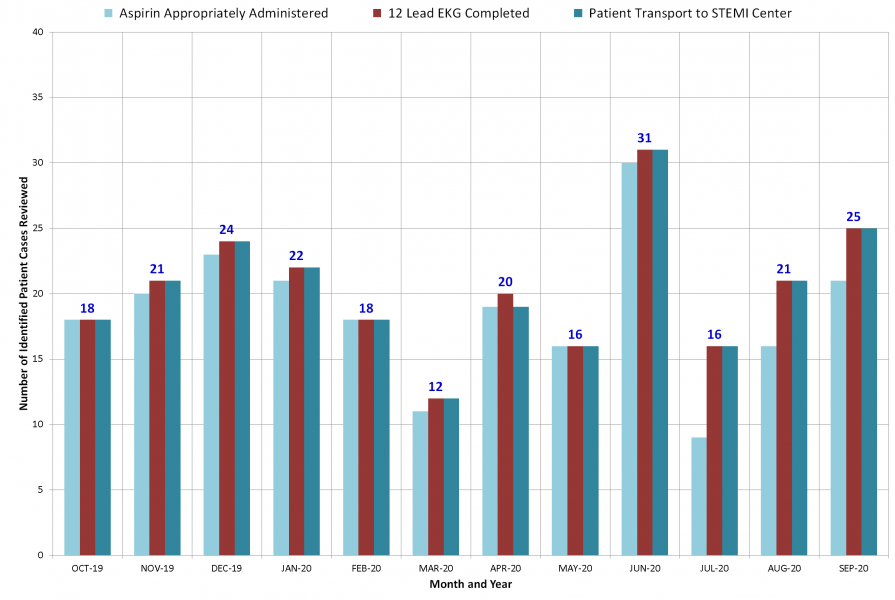According to the American Heart Association (AHA), a heart attack occurs when blood flow that brings oxygen to the heart is severely reduced or cut off completely. This may happen if coronary arteries slowly narrow from a buildup of fat, cholesterol and other substances that together are called “plaque.” This slow process is known as “atherosclerosis.” If “plaque” in a heart artery breaks, a blood clot forms around the “plaque.” This blood clot can block the flow of blood through the heart. When the heart muscle is starved for oxygen and nutrients, it is called “ischemia.” When damage or death of part of the heart muscle occurs as a result of “ischemia,” it is called a heart attack or “myocardial infarction (MI).” STEMI is a common name for “ST-elevation myocardial infarction,” which is a type of heart attack. It is caused by a prolonged period of blocked blood supply that affects a large area of the heart. STEMI has a substantial risk of death and disability unless immediately recognized and treated (to view more information about heart attacks, please click here to visit the AHA webpage).
To better evaluate the effectiveness of pre-hospital patient care provided to STEMI patients by FEMS first responders and Paramedics, the EMS Continuous Quality Improvement (CQI) office reviews patient cases treated and transported by FEMS personnel on a monthly basis. FEMS has established a goal of not less than 95% of patient cases reviewed indicating timely, appropriate and successful patient treatment. The FEMS KPI measure for this goal is the “percentage of patient cases reviewed indicating timely, appropriate and successful patient treatment.”
The table below shows the number of suspected STEMI cases reviewed by the EMS CQI office, the count of required patient treatment elements completed by FEMS personnel, the percentage of required patient treatment elements completed by FEMS personnel and the overall completion rate for all required elements (combined):





